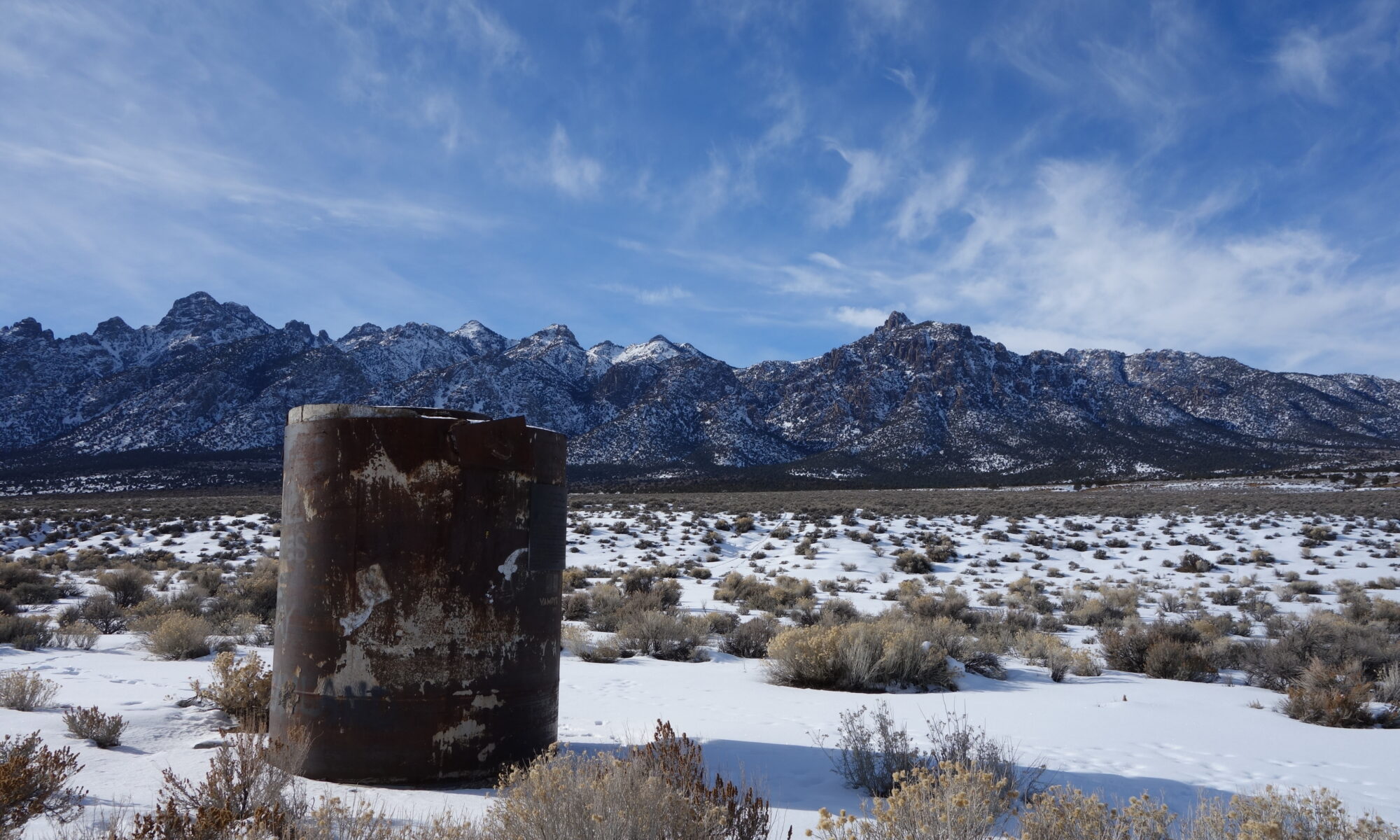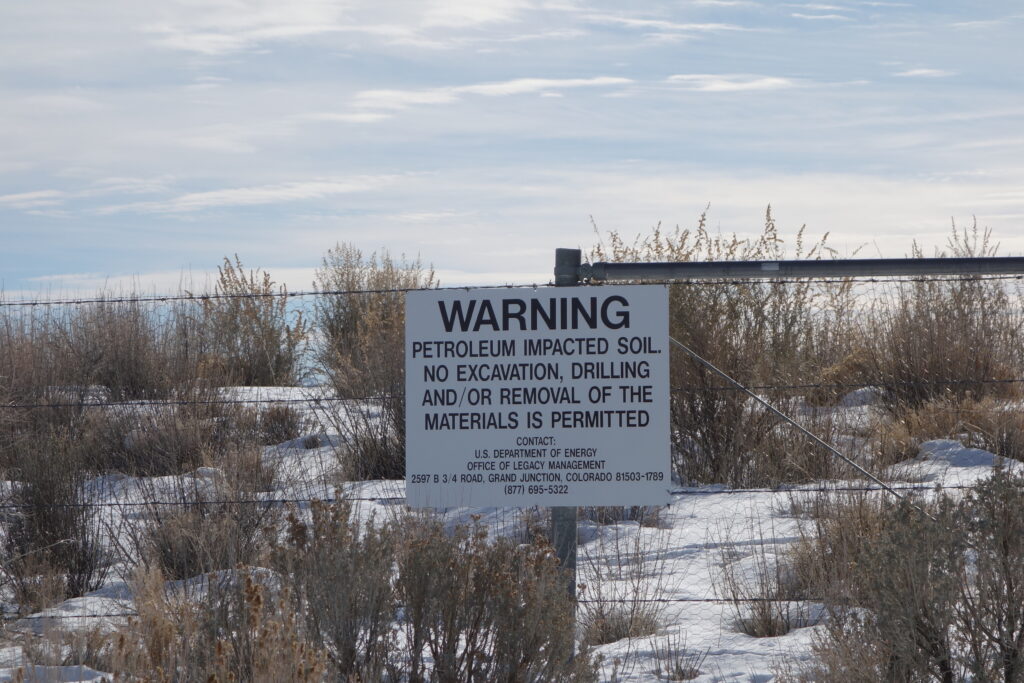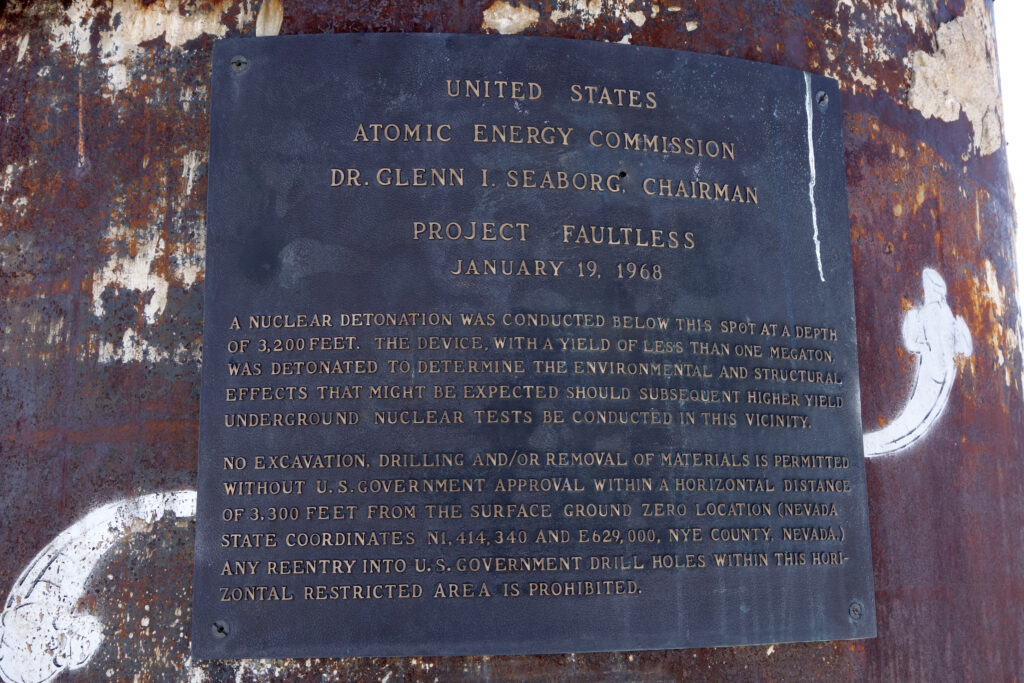Nye County, Nevada/USA

In mid-60-es the state of Nevada in general, and the Mojave Desert in particular were widely used for testing various nuclear-radioactive toys, as part of the popular “whose dick is bigger” Cold War competition between the United States and the USSR. Endless wilderness and absence of curious masses of population presented an ideal ground for these exercises, and to this day continues to attract military-research enthusiasts.
One of the lesser-known, but still epic events within the nuclear research program was “Project Faultless” – underground detonation of a megaton nuclear bomb right in the middle of the Mojave Desert. The reason for this particular test was quite peculiar – ordinarily, hydrogen and other big-ass bombs were detonated much closer to Las Vegas, getting on frayed nerves of one Mr. Howard Hughes, an elderly Texas multi-billionaire, enjoying his retirement in one of the hotels on The Strip. The race for nuclear armament sped up to a point when a bomb was going off in the vicinity of the Desert Inn, a hotel, chosen and then bought by Mr. Hughes for his residence, every three days. A pissed-off multi-billionaire is a force to be reckoned with, and Mr. Hughes‘ angry letters to all sorts of officials, and personally to President Johnson quickly got the attention of the Atomic Energy Commission. They agreed to move the testing site deeper into the desert, which they hoped would reduce the shaking of the ground near The Strip, and calm down the pestering billionaire.
Those conducting the experiment probably could have guessed that its results would not be too cheerful, but the nuclear curiosity combined with military determination and the desire to get rid of Mr. Hughes, got the better of them. The bomb with a yield of 1.0 megatons (“only” about 67 times the energy of the one dropped on Hiroshima) was put a thousand meters under ground, and happily detonated there. The results were devastating: the ground in the radius of several miles collapsed, forming a huge underground cave at the point of detonation. Radiation levels on its bottom were similar to the core of a nuclear reactor and will stay this way for the next couple thousand years.
The force of the explosion pushed the steel pipe used for putting the bomb down almost 10 feet up (initially it was level with the ground) and at the moment it remains the only sign of the past outrage.
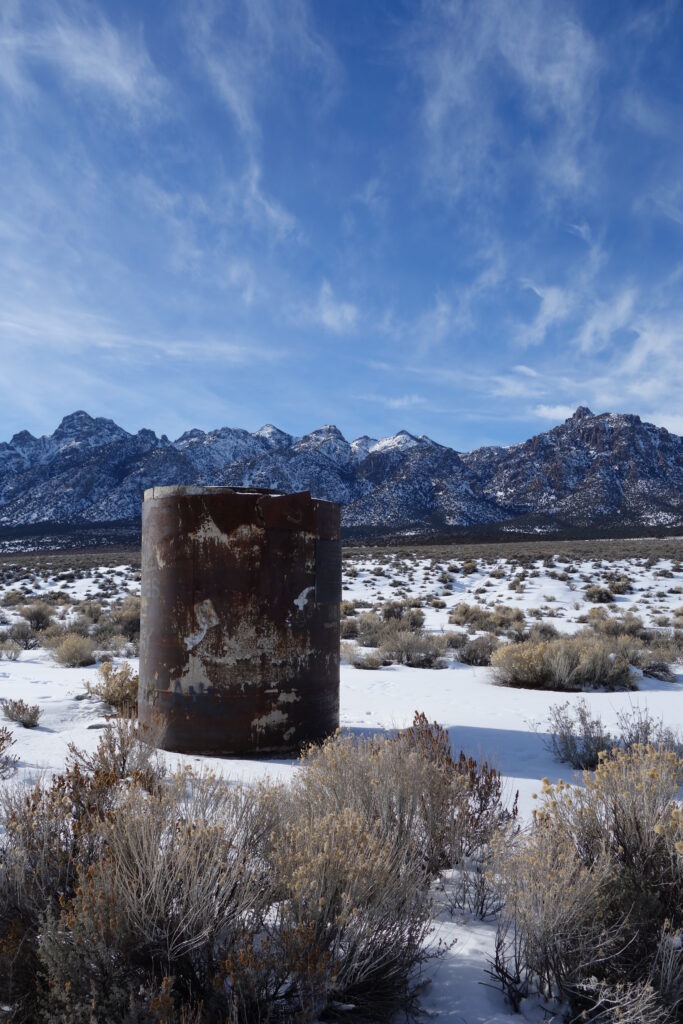
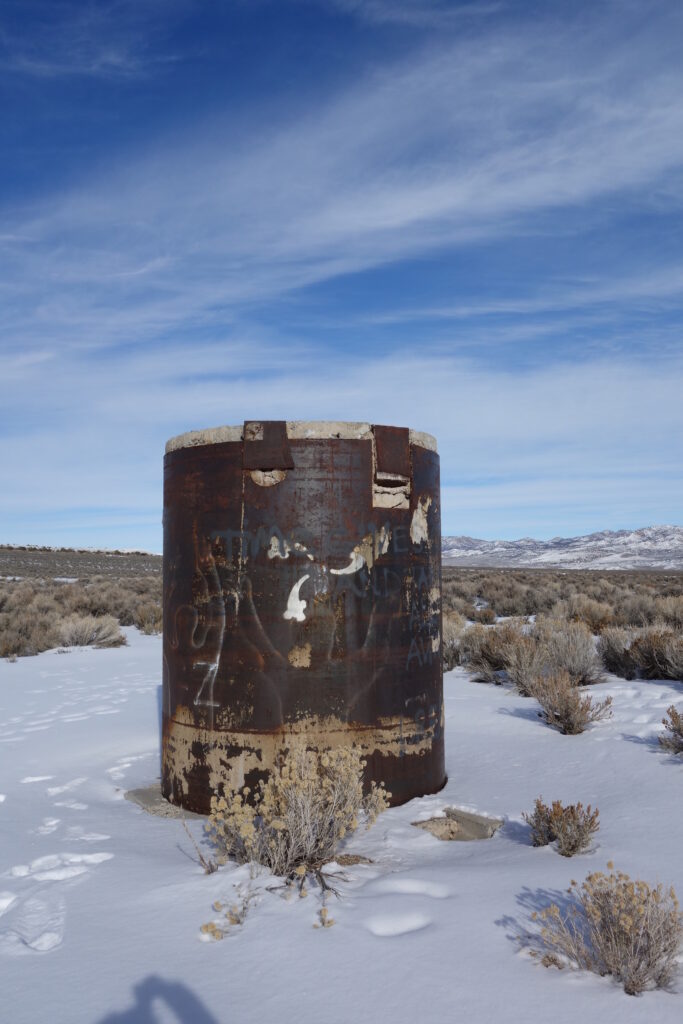
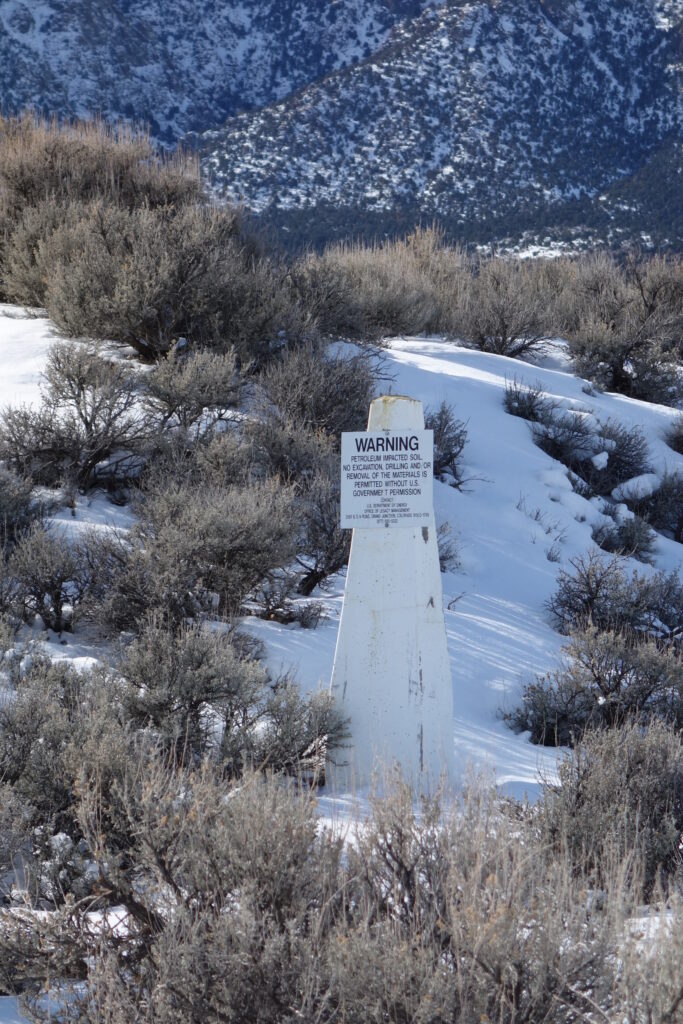
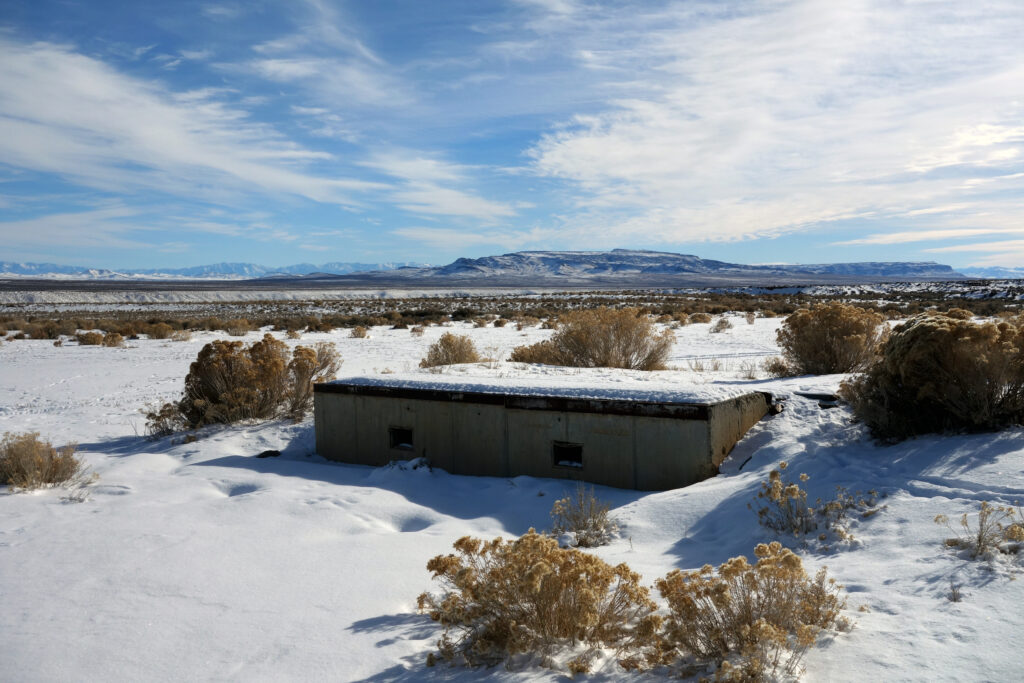
Visiting or even finding the site is not all that easy. You have to drive to the end of the Extraterrestrial Highway, push on for another hour down an adjacent road, and then for another 40 minutes along the dirt track. After that you have to open up our eyes and start searching for the pipe. Big and tall close up, it is completely lost in endless desert. It towered up in the middle of nowhere, surrounded by lame warning signs, blabbering something about petroleum pollution, and notifying the visitors not to drill, dig, or pick up rocks from the site. Sure… Petroleum, my ass!…
The plaque on the side of “Project Faultless” (quite an ironic name, considering the consequences…) did explain what it was all about, but only in very general terms.
For the record, according to all available information the level of radiation on the surface has nothing in common with the insides of a nuclear reactor, and is not expected to have any ugly consequences for visitors to the site. Which is basically confirmed by free access to the epicenter of the past horror. Just in case, it is advisable to follow the warning signs, and abstain from excavations in the vicinity of the pipe, or pocketing rocks for souvenirs.
Detailed directions on how to find the place can be found here: https://www.rachel-nevada.com/places/faultless.html


